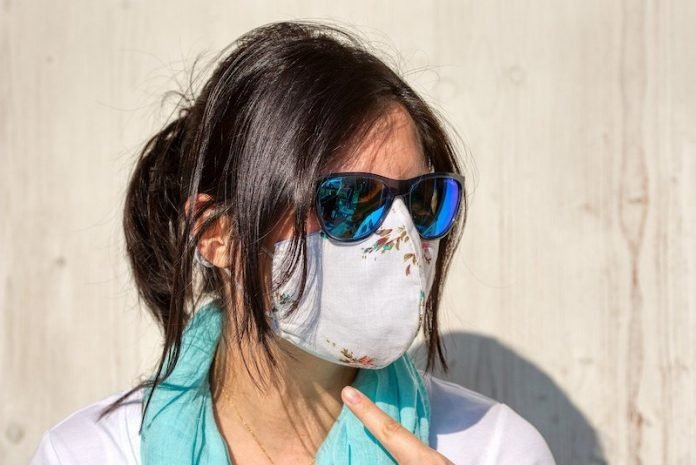
In a new study, researchers found that a three-layer mask consisting of outer layers of a flexible, tightly woven fabric and an inner layer made from one of several materials designed to filter small particles, could help protect both wearers and those nearby.
At a particle size of one micron—the average size of respiratory droplets produced during breathing and speaking—the team found filter materials can easily have a filtration efficiency of 75%, with common fabrics registering at about 40%.
When combined together in a face covering, the group calculated that materials should have an overall efficiency greater than 90% in some cases.
The research was conducted by a team at Virginia Tech.
The SARS-CoV-2 virus itself is about 0.1 microns in size, but “it doesn’t come out of us naked”.
It’s carried in larger respiratory droplets, also known as aerosols, that contain salts, proteins, and organic compounds, leading to aerosols up to 100,000 times larger in mass than the virus itself.
Previous research has shown that most such aerosols are larger than half a micron, leading the team to focus on a size range of one to two microns as most relevant for testing homemade and commercially available face coverings.
In the study, the team focused on the masks and particle sizes they analyzed and found to be most important to investigate in the context of how people go about a typical day wearing face coverings.
They tested nine homemade masks and their constituent material, as well as a surgical mask and a face shield, for their ability to trap particles ranging in size from 0.04 microns to more than 100 microns.
Each mask underwent tests for outward efficiency—the ability to trap particles exhaled by the mask wearer—and for inward efficiency for mask wearers as they inhale.
At the low end of particle sizes, from 0.1 to 0.3 microns, the homemade masks performed poorly.
But when the masks were challenged with one and two-micron particles or larger, their effectiveness shot up. Several could trap 50% to 80% of particles in tests of both inward and outward efficiency.
The researchers also ranked homemade masks and filtration materials based on the three study metrics.
Mid to high-level performers included the MERV 12 filter, surgical mask, and CDC sewn mask, with all three up providing 50% or higher inward and outward efficiency for particles at the two-micron mark.
Thin acrylic performed the worst or near-worst among homemade masks for all three metrics.
The team found several of the results for each metric surprising.
The two-ply bandana and the non-sewn CDC mask made of T-shirt cotton performed better than Marr expected at particle sizes of one to two microns.
The thin cotton—a soft, tightly-woven fabric like that of a blouse—also stood out, with inward and outward protection efficiency at those sizes just shy of or at 50%.
Combining the study’s findings with existing published literature on mask layering, the team came up with recommendations for fashioning a particularly effective homemade face covering:
make it three layers, with a soft, flexible, tightly woven fabric layer up against the mouth; a layer made of material designed to filter particles, like a vacuum bag or MERV 14 filter; and finally, another soft and tightly woven outer layer of fabric.
The face-covering should fit snugly against the wearer’s face with no gaps that could affect its performance.
One author of the study is airborne disease transmission expert Linsey Marr.
The study is published in medRxiv.
Copyright © 2020 Knowridge Science Report. All rights reserved.



